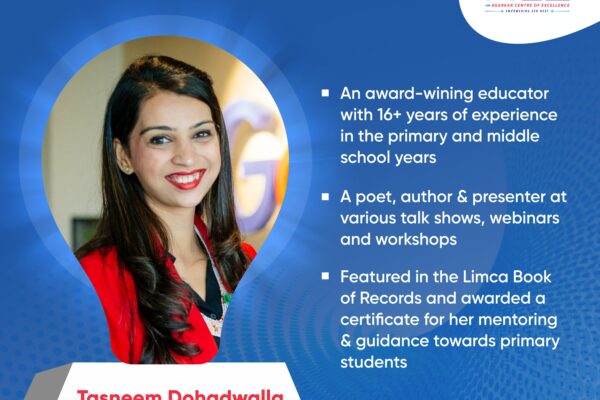Closing in on 25 years in education management and having played a part in setting up over 50 schools pan India, both national and international curricula (from a hole in the ground to graduating batches), driving a sports & life skills orientation through these schools, I was humbled by a recent interaction with two sets of parents. Burrowing from the Reggio philosophy that I so admire, I thought it is only fair that as a learner, I also share my learning with all of you, and hoping this helps all of us working in the education space to reflect.
The context to this reflection is communication with parents – as “start-up” schools (I absolutely cringe while saying it, but the truth is that new schools are in fact “start-ups”), we often are asked by parents to explain what the vision is, and what we hope to offer families seeking admission. Of course, this means inevitably parents make comparisons about the different approaches that different academic boards have. I have always maintained when interacting with parents asking me to differentiate – different disciplines that are part of a school curriculum be it Math or Sciences, History/Geography or Humanities and Languages have content organised as per the vision of the certifying Board – there is “content” (translated as syllabus) that year on year forms part of a child’s learning journey through school to culminate at the Grade 10 or 12 examinations, the structure being unique to each school and their vision but the disciplines remain the same. The facts in different subjects do not change, however the approach to learning depends on the flexibility and the creativity of the Board and the school team and its teachers. A comparison of “result” as one parent pointedly asked me to demonstrate by having children from a state, ICSE, CBSE, IB and Cambridge Board take an exam threw me off! I applaud the honesty, but I would like to say that identifying a school for your child, is not the same as going to a car showroom and ‘checking on efficiency and value for money,” by getting students to “compete”.
We cannot as a community start thinking along these lines because then we are ‘shopping’ and I believe the value of an association with a school over 15 years is about a relationship that you build when things work out and when things don’t and therefore, you attach yourself as a family to a school that knows what inspires its processes, what motivates them to do what they do, their capabilities shared transparently via their communication during the admission process, features and facilities that the school has and most importantly, trust.
I gently guided the parent who asked me what the “value of money” would be if they were to enrol into this school vis a vis another one, and I got them to reflect on their own aspirations and goals for their child, and determine if they felt an alignment with the school team, gently reminding them that school is about learning and not a trade that we discuss, and therefore “value of money” for me would be happiness that the child has coming to school, making friends, thinking and discovering and creating. Comparisons between children and between schools would never be something I would endorse, because the world is large enough to accommodate every child and every school. It would be important for the parent to work out, if they felt that the school had all the processes in place, and if the school had the child’s best interest in place and this comes from faith and trust and not only infrastructure glory or the Board the school associates with. Pathway to learn may be different but every school makes their conscious effort to grow their environment based of their vision and capabilities. This must never be forgotten.
While I was thinking about what the parent was asking me I could not help but reflect on the fact that with so many options, parents do tend to get confused about what would work for them as a family, and one important take -away from this is that we as educators, Management, school principals must make an effort to communicate our vision and allow parents to make a decision about the alignment and stay away from words like “the best”, “better than,”. The choice will always be with the parent, and the school should feel they “deserve” to work with a parent’s vision as a family too.
While this parent was bold and transparent enough to state it, I realise many were thinking about the same thing. “Which Board is better?” And I can completely identify with this thought. As a parent of a child, the intention is to give the child the “best” possible head start in life, and we believe schools are that foundation.
Some things to consider:
- Schools are homes-away-from-home for children to come and learn. Like every home of ours is different and unique to how the family culture has evolved over time, their home an extension of their values. Can one home be “better” than the other? Which one gives you the most happiness?
- Identifying a school is about location, the features and facilities, the communication, the teachers and the program. This matrix will also have to “fit” the goals of the family, and often the fees are deciders. I always remind parents, health care and education are investments not merely transactions with a cost vs benefit analysis!
- Comparisons about schools, and between children is a plague that will destroy the fiber of this society. The trick would be to be happy with who you are and the choices you make.
While this was indeed draining for me who thinks about learning as a tool to help children hopefully solve problems and challenges as the world transitions year after year I was also inspired twenty minutes later with an interaction by a parent who spoke about learning as blessing delivered by teachers, who strive hard to balance so much. Their own journey, their juggles with time and mental health, devoting unconditional love and attention to the children. Her question about our school was simple. I quote, “We are giving our child to you, so we trust and we are beyond the walls and the Board, we care about the people and the values they will inspire our child with, the energy they bring. We therefore hope you think about the teachers who nurture these children, for if they are happy and looked after professionally, they will do their best. Tell us how you nurture them.” This parent interaction becomes the reason that I am in education. This is the parent that drives me to value the impact we create as educators, and this is the parent who ‘lifted” me to keep driving those innovations. This is the parent that must represent the community thought. So from a “low” to a “high” in 20 minutes, I am grateful for this journey and learning. And this is my tale of two parents.












